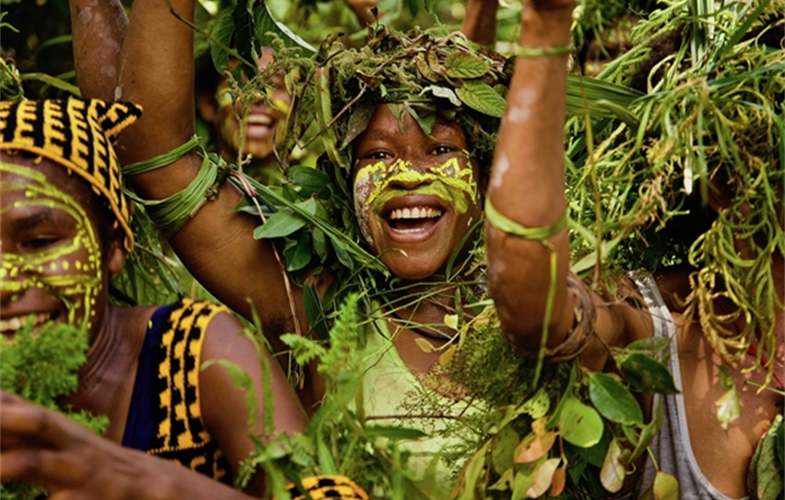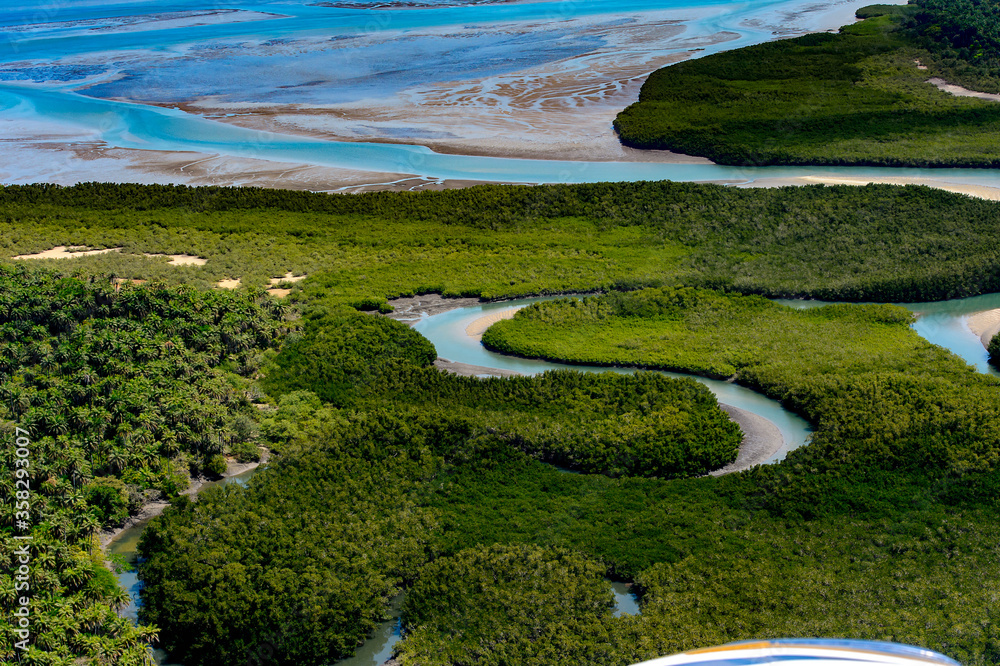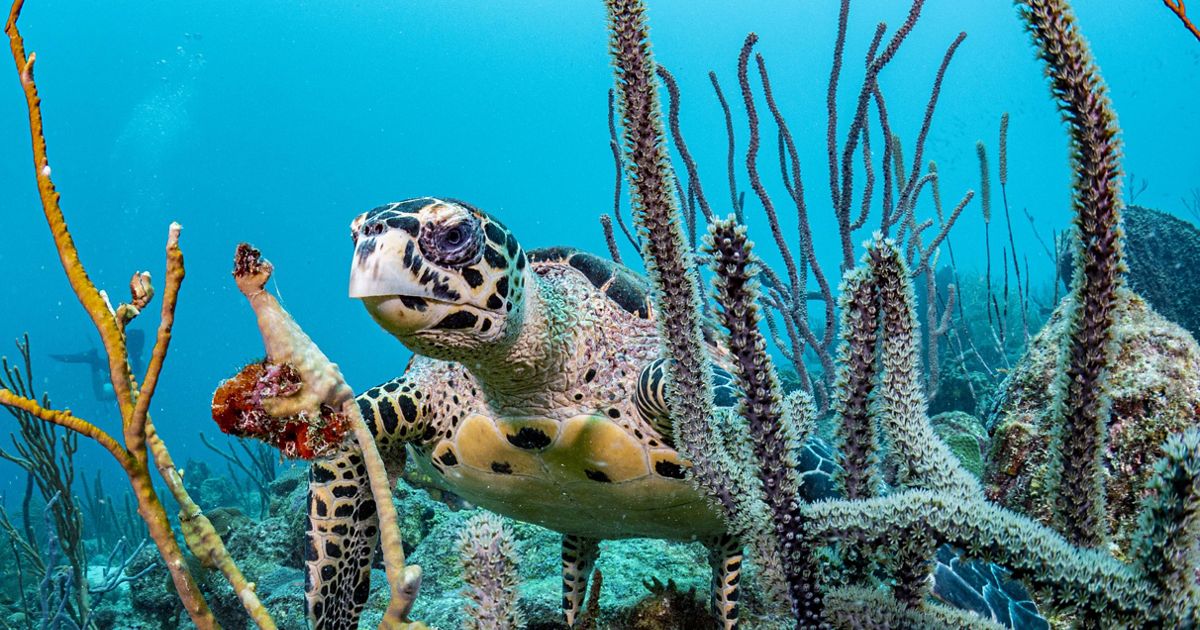As we race towards COP27, SIDS are preparing their newest climate messages to the world. Urgent calls to action have already been tried, in illustrative fashion. Global commitments have been made. Yet, the climate crisis continues to accelerate with SIDS at the frontlines, compounded by overlapping economic, social, and environmental crises. Only a handful of countries have been progressing in maintaining their emissions to levels compatible with the limit of a 1.5C temperature rise, after having promised to do so at COP26. So, at COP27 this year, SIDS are preparing more than messages of urgency – they will lead by example, based on innovative solutions to transform promises into action.
Digital technologies have offered SIDS a critical lifeline over the past two years, with governments quickly adapting to offer fundamental services online such as healthcare, social security and education. As a key aspect of green recovery in SIDS, digital innovations are also helping to optimize conservation efforts, tackle plastics and other pollutants, trace commodities and more. Devastated by Hurricane Maria in 2017, Dominica has set the ambition to be the world’s first climate resilient nation, and has prioritized digital transformation as a pillar of the country’s resilience planning, as outlined in the recently adopted Dominica National Digital Transformation Strategy. However, reliance on these technologies has also widened the digital divide. Therefore, people must be at the center of innovation to build foundational digital infrastructure for the benefit of all. At the center of digital technologies and climate policy is data, which plays a key role in supporting structural, financial and technological transformation. In the context of the UNDP SIDS Offer, ‘Rising Up For SIDS’, UNDP has developed the new SIDS Data Platform, an innovative digital tool to allow SIDS to take full advantage of updated, standardized, and comprehensive data to accelerate and the strengthen their economic, social, and environmental recovery.
In this bulletin, we highlight SIDS’ efforts in leveraging the potential of digital transformation towards greener and bluer recovery, as well as the innovative solutions in preserving SIDS' biodiversity and natural wealth, while shedding the light on the pressuring challenge of inadequate climate finance and debt crisis that most of SIDS are facing. We also highlight recommendations for policymakers and governments towards more sustainable economies and environments in SIDS.
Image: Tracey Jennings/Ocean Image Bank #RisingUpForSIDS #UNDP4SIDS
Country Corner

Image: Elodie Van Lierde
Papua New Guinea is pioneering a digital toolkit to support biodiversity conservation
The protection of nature is a human right in the constitution of Papua New Guinea (PNG). PNG is considered one of the world’s richest countries in terms of natural resources and biodiversity, as it holds more than 7 percent of the world’s species. Cultural inheritance and strong linkage to nature is considered one of the main reasons behind PNG’s biodiversity and nature’s conservation, and its people depend on the country’s natural resources for their existence and sustainability and is part of their identity. Despite these efforts to preserve their wealthy natural resources and protect the country’s biodiversity, the country’s natural wealth is at very high risk due to the mounting population growth and unsustainable activities, with very low climate financing in return. For example, less than 15 percent of PNG’s protected areas receive financial support.
PNG is providing leadership in showing how climate finance and strong partnerships could help accelerate its green and blue recovery while building resilient and sustainable environments. In order to face this challenge and restore and protect its biodiversity and cultural heritage, PNG is mobilizing financial and technical support through partnerships and innovative tools to guide informed decision-making for comes to livelihoods and sustainable development. The PNG biodiversity digital toolkit is a new method to help protect the country’s biodiversity. PNG is also enhancing its blue economy through support to women-led businesses in the marine field while preserving the country’s coral reefs and mangrove forests.

Image: Anton Ivanov Photo/Adobe Stock
As highlighted in a previous bulletin, tourism is key to blue and green economies and to development in SIDS since it accounts for almost 30-40 percent of the GDP of some small nations. Tourism thus provides a valuable economic engine, but also exposes these economies significantly to external economic shocks. In Guinea-Bissau, the tourism sector share of GDP is less than 2 percent. However, the country is beginning to leverage the potential of this sector and is expected to become one of the most visited African destinations in the coming years, while integrating resilient strategies to make sure not to overexpose their economy to external shocks. In the expected rapid development phase, an integrated and participatory approach will ensure that benefits are shared equally leaving no one behind.
In order to reach its development targets the government of Guinea-Bissau has prioritized the tourism sector as a central engine of growth. Maritime transport as well as fisheries represent another core factors to the country’s economic growth and building resilience, including through the development of a Blue Economy strategy. In this regard, Guinea-Bissau will be working over the next three years with the aim of reinforcing and building its environmental adaptive capacity and integrating climate change mitigation and adaptation strategies into the country’s national planning process, while consolidating the efforts in investing in sectors that strengthen economic growth of Guinea-Bissau such as agriculture and tourism. This approach will offer job opportunities to the large unemployed youthful population in the country, and will also be a gateway to investing and strengthening the infrastructure of other underdeveloped sectors such as education, health, transportation, digital transformation and internet connectivity.
In the News

Image: The Nature Conservancy
Funding marine conservation through innovative debt restructuring
More than three billion people in the planet rely on the ocean for their food security, livelihoods, and jobs, with the majority living in developing countries. However, and in spite of the multidimensional crisis they are facing, SDG 14 has been receiving the lowest level of investment of all SDGs. In order to compensate for this financing gap, blue bonds, inspired from sustainability linked bonds, are receiving a lot of attention from SIDS.
After Seychelles has launched the first sovereign blue bond in 2018, Fiji, with support from UNDP, UNCDF and other partners, is developing its first Sovereign Blue Bond. The first tranche, to be launched in 2022-2023 will support coastal protection, sustainable fisheries, maritime safety, security and sustainable waste management. Similarly, and following on the heels of Belize, the Government of Barbados has just uncovered a blue bonds projects that will unlock USD 50 million in funding. The initiative, with support from TNC and the InterAmerican Development Bank, will provide the financing needed to support communities and develop its blue economy, while protecting marine ecosystems. The transaction is based on the TNC Blue Bonds for Conservation model that supports the refinancing of sovereign debt at a lower interest rate to create long-term sustainable financing for marine conservation.
In spite of successful examples, bonds may not be appropriate in every SIDS. 15 out of 20 SIDS, rated according to the Debt Sustainability Analysis of the World Bank and IMF, are either in debt distress or at a high risk of debt distress as of December 2021. For instance, the average debt-to-GDP ratio in the Pacific increased from 32.9 percent in 2019 (before the pandemic) to 42.2 percent in 2021. For SIDS with high debt burdens also being exacerbated by COVID-19, adopting such instruments can add to a country’s debt stock and different mechanisms should be sought.
Read more in our SIDS Bulletin issue 65 here.

Please log in or sign up to comment.